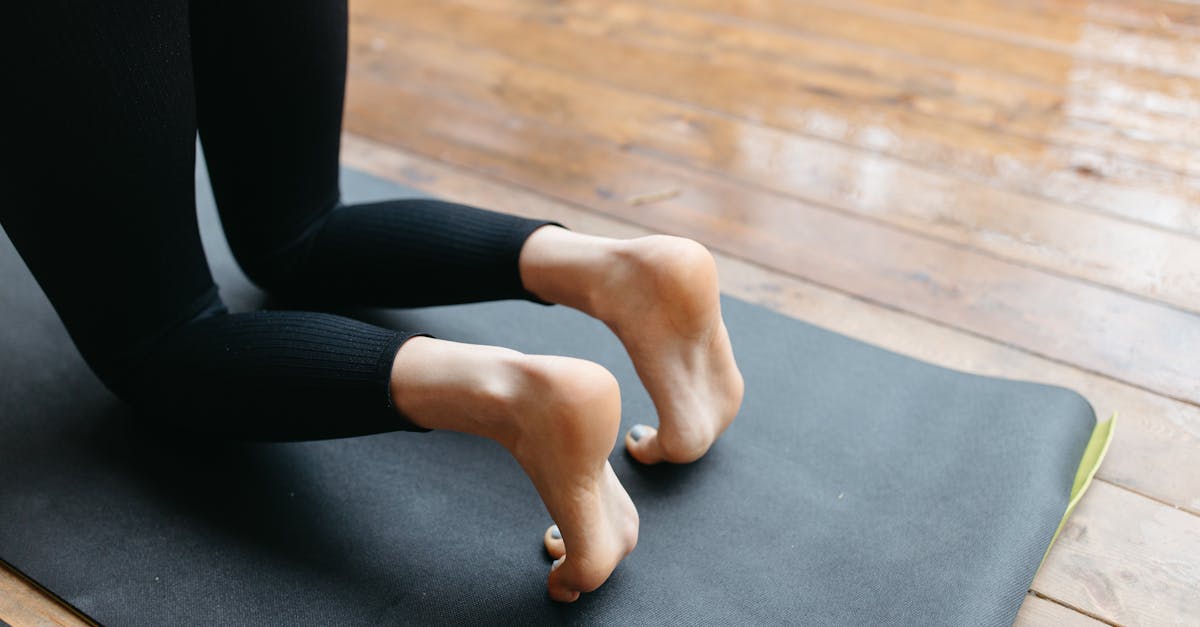Suffering from discomfort due to anterior pelvic tilt? Discover a path to relief.
In Short: Anterior pelvic tilt causing you pain and discomfort? This common postural issue can lead to bad posture, including challenges like forward head posture and rounded shoulders. Pulse Align offers effective posture correction techniques, such as core strengthening, yoga for posture, and the Alexander Technique, to help improve posture and restore balance. Clients can experience remarkable results, including reduced tension and increased stability. Reclaim your health and wellness at Pulse Align Clinics. Book your appointment today!
Are you struggling with lower back pain and poor posture?
Discover how Pulse Align can assist with anterior pelvic tilt through innovative posture correction techniques. Studies show that over 80% of adults experience the effects of bad posture, leading to issues like forward head posture, rounded shoulders, and chronic lower back pain. Pulse Align’s holistic approach, incorporating methods such as core strengthening, yoga for posture, and the Alexander Technique, provides effective solutions to improve posture and alleviate discomfort. Experience a transformative journey towards alignment and well-being with Pulse Align’s tailored programs.

Are you aware that your posture plays a significant role in your overall well-being? Many individuals today struggle with the effects of poor alignment, particularly anterior pelvic tilt. This common postural imbalance can lead to discomfort and tension, affecting your day-to-day life. Understanding how to promote posture improvement is essential, and at Pulse Align, we focus on neuromuscular recalibration to support your journey toward optimal alignment.
The Pulse Align Approach
At Pulse Align, our mission is to help clients reclaim their health through a gentle, non-invasive approach. We utilize gentle stimulation techniques designed to promote muscle tone symmetry, enabling the body to regain its natural balance. Our focus on postural correction and functional movement allows clients to experience improvements in their overall well-being without the use of direct medical interventions.
Holistic Benefits of Pulse Align
By prioritizing a holistic approach, Pulse Align helps clients tap into their inherent ability to heal and balance themselves. Many have reported enhanced flexibility, improved posture naturally, and a greater sense of stability in their everyday activities. As one satisfied client said, “Since starting with Pulse Align, I’ve noticed a significant reduction in tension and my posture has never felt better!” Such experiences are a testament to our commitment to fostering a supportive environment for all clients.
Take the First Step Toward Improved Well-Being
Are you ready to explore how Pulse Align can help with anterior pelvic tilt? Discover our services and benefit from our supportive community. We have clinics located in Montreal, La Prairie, Terrebonne, Chicoutimi, Charlesbourg, Saint-Jérôme, Châteauguay, Sainte-Marie, Les Escoumins, Granby, and Panama City. Find a Pulse Align clinic near you and start your journey toward better alignment today!
Please remember that while Pulse Align complements your wellness journey, it works best alongside your existing healthcare team. Our focus is on facilitating natural balance, allowing your body to function more effectively and comfortably.
- Postural Assessment: Comprehensive evaluation to identify misalignments.
- Core Strengthening: Focus on exercises to enhance abdominal and gluteal muscles.
- Mindful Movement: Techniques to promote body mechanics awareness.
- Ergonomic Guidance: Advice on proper sitting and standing practices.
- Stretching Routines: Targeted stretches for tight hip flexors.
- Holistic Approach: Integration of various techniques for overall well-being.
- Client-Centered Care: Personalized support to tailor solutions.
- Community Wellness: Fostering a supportive environment for recovery.

Anterior pelvic tilt is a common postural issue that can lead to several challenges such as bad posture, lower back pain, and discomfort in daily activities. Understanding how to improve posture is essential for enhancing overall well-being. At Pulse Align, we focus on promoting neuromuscular health, aiding in posture improvement through holistic recalibration methods. This article explores how our innovative techniques can assist individuals in overcoming anterior pelvic tilt and related conditions.
Understanding Anterior Pelvic Tilt
Anterior pelvic tilt occurs when the front of the pelvis tilts forward and the back tilts upward, often resulting in exaggerated lordosis and discomfort. This posture imbalance can lead to a domino effect, resulting in other issues such as forward head posture and rounded shoulders. Recognizing the symptoms of anterior pelvic tilt is the first step towards finding effective treatments.
Core Strengthening for Structural Support
Engaging in core strengthening exercises is crucial for stabilizing pelvic alignment. Exercises such as planks and gluteal bridges target the deep stabilizers needed to maintain balance. These posture exercises not only enhance muscle tone symmetry but also alleviate discomfort associated with anterior pelvic tilt. Pulse Align offers personalized core strengthening routines tailored to your unique needs.
Mindful Movement Techniques
Incorporating methods such as the Alexander Technique and Feldenkrais Method can significantly aid in addressing postural issues. Both techniques help cultivate awareness of body mechanics during daily activities, promoting a more balanced posture. Mindful movement encourages individuals to engage with their bodies in a way that fosters natural recalibration.
Effective Stretching Exercises
Stretching exercises targeting the hips and low back are essential to counteract tightness that may result from anterior pelvic tilt. Stretching routines, including lunges and hip flexor stretches, can help improve flexibility, thereby enhancing overall posture. Integrating yoga for posture into your routine can further elevate your practice and assist in achieving greater balance.
Ergonomics and Proper Sitting Posture
Understanding ergonomics is vital for those dealing with anterior pelvic tilt. Making simple adjustments, like using a standing desk or maintaining proper sitting posture, can drastically reduce strain on the back. These adjustments help distribute body weight evenly and support better posture throughout the day.
Client Experiences: Transformations at Pulse Align
Clients at Pulse Align have shared remarkable improvements in their overall comfort and posture after engaging with our techniques. Many have expressed how our gentle methods foster healing and promote a holistic approach to wellness. For instance, a resident of Montreal reported, “After a few sessions at Pulse Align, I noticed and felt the difference in my posture and overall comfort.”
Book Your Consultation Today
Ready to take proactive steps toward reclaiming your health? Discover the advantages of Pulse Align’s non-invasive services that focus on addressing anterior pelvic tilt through individualized care. Whether you’re interested in core strengthening exercises, stretching routines, or ergonomic adjustments, our expert team is here to guide you. Book your consultation today at one of our clinics in locations such as Montreal, La Prairie, or Panama City, and embark on your journey toward better alignment and overall well-being.
| Aspect | Pulse Align Approach |
|---|---|
| Holistic Wellness | Focuses on enhancing overall well-being through posture awareness and mindful movement. |
| Balance Restoration | Utilizes gentle methods to promote natural body alignment and stability. |
| Core Strengthening | Incorporates exercises targeting essential muscle groups for improved posture support. |
| Mindful Movement Techniques | Encourages practices that enhance body awareness and effective movement patterns. |
| Ergonomic Guidance | Provides advice for adjusting daily habits to support better alignment. |
| Stretching Routines | Focuses on targeted stretches to alleviate tightness and improve flexibility. |
| Client-Centered Care | Offers personalized support tailored to individual needs and goals. |
| Community Support | Fosters a collaborative environment for shared wellness journeys. |
| Gentle Techniques | Utilizes soft methods that respect the body’s natural recalibration processes. |
| Empowerment | Encourages clients to actively participate in their wellness journey for lasting benefits. |

Client Testimonials: Embracing Wellness with Pulse Align
“As someone experiencing discomfort due to anterior pelvic tilt, my journey with Pulse Align has been truly transformative. Their unique approach supports my body’s natural ability to recalibrate, allowing me to feel more balanced in my everyday activities. Since starting my sessions, I’ve noticed significant improvements in my posture and overall wellness,” shared a satisfied client from Mont-Royal.
“Living in Châteauguay, I was initially skeptical about how Pulse Align could address my posture issues. However, the gentle techniques they employ have made a noticeable difference in alleviating discomfort related to anterior pelvic tilt. The supportive environment really emphasizes my body’s healing process,” expressed another client who has seen improvements in their overall comfort.
Clients in Sainte-Marie have also found great value in Pulse Align’s services, sharing experiences of enhanced energy and stability thanks to the holistic techniques offered. “The focus on core strength and mindful movement transformed my approach to wellness. I’ve experienced a renewed sense of vitality as I embrace a more balanced lifestyle,” noted a long-time client.
“In Chicoutimi, I discovered that Pulse Align’s commitment to nurturing the body’s inherent ability to heal has proved invaluable. The personalized support I received helped me understand my body and realign myself naturally. I feel empowered on my wellness journey, and I encourage others in the region to explore their services for improved balance,” remarked another enthusiastic client.
Many clients from Deux-Montagnes to Les Escoumins have echoed similar sentiments, highlighting how Pulse Align complements their healthcare efforts and supports a holistic recovery process. “With each session, I’ve felt the benefits of improved posture and pain reduction. It’s reassuring to know that I’m supported on my path to wellness,” reflected a client who truly appreciates the integrated approach.
For those residing in Terrebonne or Saint-Jérôme, the opportunity to book a consultation with Pulse Align is an important step towards restoring balance and enhancing well-being. The integral focus on recalibrating the body through gentle techniques fosters an environment where clients can thrive.
Discover how Pulse Align can assist you on your wellness journey—regain a sense of alignment and vitality. Schedule a visit today, and explore our locations to find a clinic near you at Our Clinics, where we proudly support clients alongside their healthcare teams.
Suffering from discomfort due to anterior pelvic tilt? Discover a path to relief.
In Short: Anterior pelvic tilt causing you pain and discomfort? This common postural issue can lead to bad posture, resulting in challenges like forward head posture and rounded shoulders. Understanding how to improve posture is essential for enhancing your overall well-being. By engaging in core strengthening exercises and incorporating mindful movement techniques such as yoga for posture and the Alexander Technique, you can achieve a more balanced and aligned body. Pulse Align’s clinics are equipped with innovative approaches to posture correction that can guide you on your journey toward improved alignment and stability. Reclaim your health and wellness at Pulse Align Clinics. BOOK YOUR APPOINTMENT today!
Are you struggling with lower back pain and poor posture?
If you have anterior pelvic tilt, here’s how Pulse Align may help! Studies show that 80% of adults suffer from bad posture, leading to symptoms like lower back pain and forward head posture. Discover a revolutionary approach to correcting hyperlordosis and improving posture through targeted posture exercises, core strengthening, and mindful movement. Pulse Align offers effective techniques such as the Alexander Technique and Feldenkrais Method, providing a holistic solution to enhance your well-being and help you regain a stable, pain-free body.
Our Mission
At Pulse Align, our mission is to deliver evidence-based, client-centered treatments that address the underlying causes of pain and dysfunction. By integrating advanced techniques and technologies, we strive to empower each person to take control of their health, ensuring a high standard of care, lasting relief, and an improved quality of life.
Understanding anterior pelvic tilt and how Pulse Align helps with effective recalibration is crucial for enhancing your posture. Studies show that 80% of adults experience issues related to bad posture, often resulting in symptoms like lower back pain and forward head posture. Discover a revolutionary approach to correcting hyperlordosis, kyphosis, and swayback posture through techniques such as core strengthening, yoga for posture, and the Alexander Technique. With a focus on posture correction and mindful movement, Pulse Align empowers individuals to reclaim their health and embrace every moment, free from the constraints of pain.
In our modern world, many individuals experience discomfort due to poor posture and imbalances in muscle tone. These issues can manifest as tension and affect everyday activities, ultimately influencing overall well-being. At Pulse Align, we focus on posture improvement and neuromuscular recalibration, employing gentle stimulation techniques designed to promote natural balance and enhance overall health.
Learn more about our approach and available services at www.pulsealign.com and find a location near you here: https://pulsealign.com/our-locations/.
Experience Relief with TAGMED’s Neurovertebral Decompression Therapy
TAGMED offers an advanced solution to chronic pain through its specialized Spinal Decompression Therapy. Designed specifically for patients suffering from moderate to severe conditions—such as herniated discs, bulging discs, and spinal stenosis—this non-surgical technique gently reduces pressure on affected areas, enhancing mobility, alleviating discomfort, and promoting the body’s natural healing processes. If conventional treatments have not provided the relief you seek, discover how TAGMED’s evidence-based approach can help you reclaim an active, pain-free lifestyle.
Have you tried conventional treatments and still struggle with persistent back pain due to a severe disc condition?
Mechanism of Action
TAGMED’s neurovertebral decompression involves applying a controlled, progressive traction force to the spine. This technique effectively increases the space between vertebrae, thereby reducing pressure on intervertebral discs and nerve roots. As the pressure is lowered, fluid circulation improves in the targeted areas, which enhances healing and reduces inflammation. By creating a non-invasive solution, neurovertebral decompression offers a viable pathway to relieving chronic back pain and other debilitating conditions.
Specific Benefits
This non-invasive approach can significantly alleviate chronic pain and symptoms associated with conditions like herniated discs and foraminal stenosis. By optimizing fluid circulation around the discs, TAGMED’s technique promotes quicker recovery and improves the overall quality of life for many clients. Patients often experience reduced pressure on nerve structures, which directly contributes to diminished symptoms like sciatica and facet syndrome, leading to better daily functioning.
Comparison with Other Treatments
When comparing the effectiveness of TAGMED’s neurovertebral decompression technology with other commonly utilized treatments such as pain medications, corticosteroid injections, and surgical interventions, the advantages become clear. Unlike these traditional methods that may come with various risks and complications, neurovertebral decompression is non-invasive and minimizes medication-related side effects, offering a potentially faster path to recovery. Patients seeking evidence-based alternatives will find this approach particularly compelling due to its focus on natural healing and restoring balance to the body.
Case Studies or Testimonials
Many patients have experienced remarkable transformations thanks to TAGMED’s spinal decompression therapy. One patient noted, “After undergoing the therapy, my lasting pain relief allowed me to resume my daily activities without discomfort. I have significantly reduced my reliance on pharmaceuticals.” Another individual shared their experience: “The treatment not only alleviated my chronic neck pain but improved my mobility, allowing me to enjoy life again.” These testimonials illustrate the tangible benefits and practical results of TAGMED’s innovative therapeutic approach.
Conclusion: Embrace a Healthier You with Pulse Align
If you’re looking to address anterior pelvic tilt and its associated challenges, Pulse Align offers a gentle, holistic approach that emphasizes posture correction and natural pain relief. By focusing on neuromuscular recalibration, we support your body in achieving improved alignment, enhancing mobility, and fostering overall well-being.
Many clients have shared their positive experiences with Pulse Align, highlighting how our supportive environment promotes healing and empowers individuals on their wellness journeys. By integrating innovative techniques, we guide clients toward a more balanced and aligned body, leading to a reduction in discomfort and a greater sense of vitality.
We invite you to take the next step in your wellness journey. Discover the Pulse Align difference today by visiting our website or scheduling your consultation. Experience firsthand the benefits of our client-centered approach and embrace a life of enhanced health and stability.

Do you suffer from a chronic condition that responds little or not at all to conservative treatments?
Discover an innovative, non-invasive method at Pulse Align that helps restore the body’s natural balance and posture through gentle, imperceptible pulses. This holistic approach is designed to promote muscle tone symmetry and enhance overall well-being by reducing tension and discomfort that can arise from imbalances. As clients embark on this journey, they often report feeling revitalized and aligned, highlighting the effectiveness of this gentle, alternative solution.
At Pulse Align, we focus on helping the body recalibrate itself naturally. The emphasis is not on alleviating discomfort directly; rather, we create an environment where remarkable improvements can occur organically. By nurturing the body’s innate capacity to restore its balance, clients frequently experience enhanced comfort and improved posture, allowing them to engage fully in their daily lives.
Our personalized approach sets Pulse Align apart. Clients from diverse backgrounds have shared their uplifting testimonials, highlighting profound changes in their overall wellness. Many report significant improvements in how they feel during everyday activities, showing that our techniques cultivate an improved sense of equilibrium and relaxation. This positive feedback reflects our commitment to providing individualized support that resonates with each person’s unique journey.
We invite you to learn more about how Pulse Align can assist your family, whether you’re in La Prairie, Mont-Royal, Terrebonne, Les Escoumins, Charlesbourg, Deux-Montagnes, Sainte-Marie, Chicoutimi, Châteauguay, or Saint-Jérôme. Our services are designed for people of all ages, including children and pregnant women, ensuring inclusivity and safety for every family member. Visit our website to explore nearby locations and book a consultation today, as we complement existing healthcare services, always prioritizing your well-being. Experience our family-friendly, safe, and non-invasive approach by booking an appointment online today at Pulse Align.
Frequently Asked Questions
Posture Imbalance, body misalignment
Should I consult a professional before starting exercises?
It’s recommended, especially if you have chronic pain, to receive a tailored program and prevent injury.
Can I correct postural imbalance at home?
Yes, targeted exercises, stretching, massage, and being mindful of your daily posture can help, but professional guidance is recommended.
How does breathing influence posture?
Proper diaphragmatic breathing supports the trunk and improves alignment, while shallow breathing can increase tension.
Do sit-stand desks help reduce imbalance?
Yes, alternating between sitting and standing reduces static tension and supports better overall alignment.
Can stress contribute to postural imbalance?
Yes, stress can increase muscle tension and encourage poor posture, thereby worsening postural imbalance.
Can mobile apps help improve posture?
Yes, some apps offer reminders, exercises, and visual assessments to help correct posture.
Does being overweight affect posture?
Yes, excess weight, especially around the abdomen, can shift the body’s center of gravity and increase joint strain.
Why are core muscles so important?
Core muscles support the spine, stabilize the pelvis, and are essential for maintaining proper overall alignment.
How often should I do postural exercises?
Ideally 3 to 5 times a week, depending on the program, for long-lasting improvements.
How long does it take to improve misalignment?
The timeframe varies depending on severity. With consistent effort, it may take a few weeks to a few months to see significant improvements.
Gabriel Dupuis knows that life’s pains can often be traced back to the way we sit, stand, and move. As a Posture Awareness Advocate at Pulse Align, he’s committed to showing readers how small adjustments in alignment can bring big relief. With a blend of empathy and evidence-based research, Gabriel translates the science of posture into practical steps that help ease discomfort, protect against injury, and restore natural balance. He believes that everyone deserves to feel strong, stable, and pain-free—and through his writing, he offers the guidance and encouragement to help readers reach that goal.
Medical Disclaimer
The information and advice provided on this site do not replace the advice, diagnosis, or treatment of a healthcare professional. Please note that the author of this article is neither a doctor nor a specialist in a medical specialty as defined by the Collège des médecins du Québec. Manual medicine, functional medicine, and sports medicine as described on this site exclude any medical treatment or diagnosis made by a doctor or medical specialist. Always consult your doctor for any medical questions. For more details, please read our complete Legal Notice.




